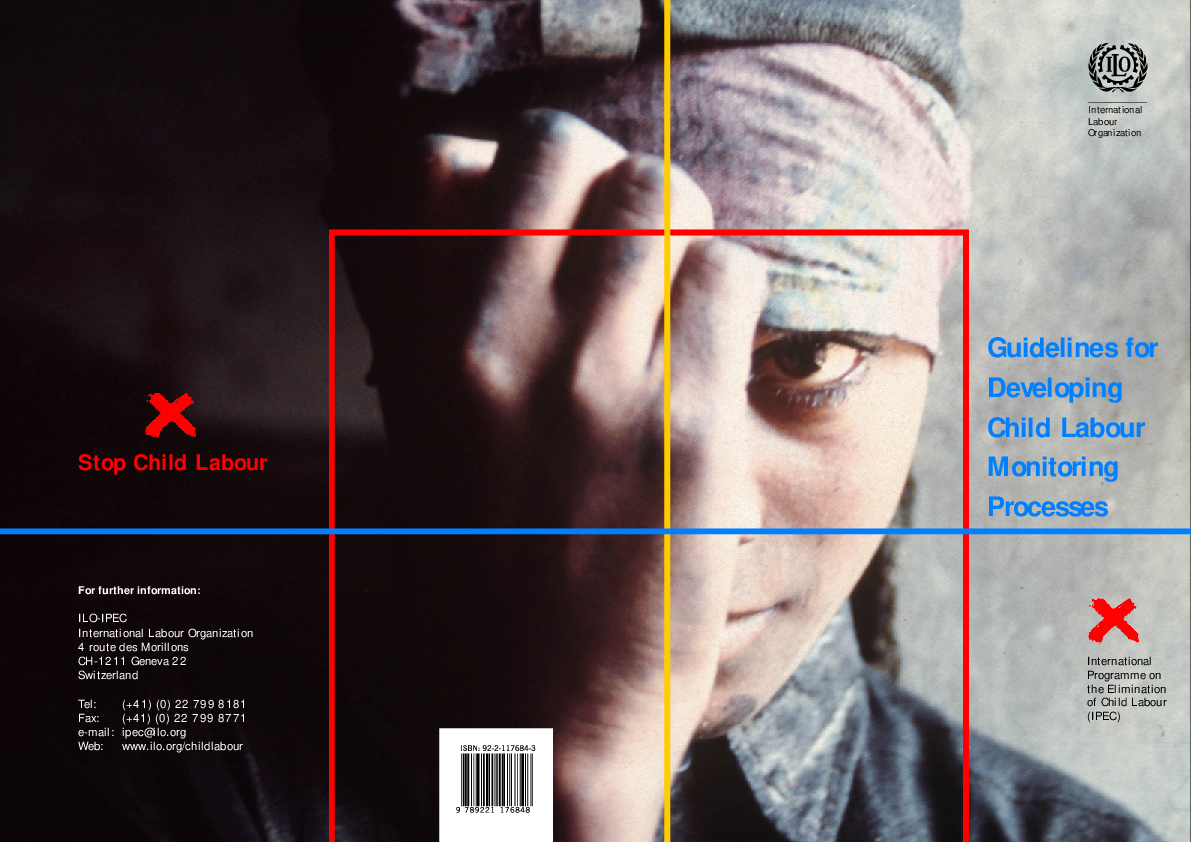
Manuals, Toolkits and Guidance
Guidelines for Developing Child Labour Monitoring Processes
Publication year:
2005
English
Format:
(1.3 MiB)
Publisher:
ILO, International Labour Organization
The purpose of child labour monitoring (CLM) is to identify and remove girls and boys from child labour and refer them to rehabilitation services. In this way, CLM contributes to the progressive elimination of child labour in particular economic sectors or geographic areas. In the long run, the goal of developing and implementing CLM is to institutionalize an ongoing process of observation, identification and removal and, where possible, to expand it or replicate it in other sectors or regions. To do this, CLM requires a framework based on the active support and participation of the local community and government at all levels.
These guidelines provide information on how to design, develop and operate child labour monitoring. They describe a generic model of the process of child labour monitoring along with practical examples that will help you to adapt the model to specific child labour situations. The model can be used when developing CLM work in specific child labour sectors, such as commercial agriculture, small-scale mining and manufacturing industries. It is recommended, however, that CLM be area-based, covering all forms of child labour in a given geographical region. To ensure its legitimacy, CLM should be operated through a wide multi-sector alliance. The guidelines describe the links and potential inputs of CLM to local and national policies.
These guidelines are intended for ILO-IPEC staff and governmental and non-governmental organizations involved in implementing child labour projects. They can also be useful for policy-makers and social planners engaged in designing national policies and action plans.
Read full abstract
View & Download
English
1 Documents
Document information
Content type
Rights
© Author/Publisher
Found a mistake? Help us improve!
If you have noticed a document assigned to the wrong author or any other inaccuracies, let us know! Your feedback helps us keep our data accurate and useful for everyone.
Share
Link
